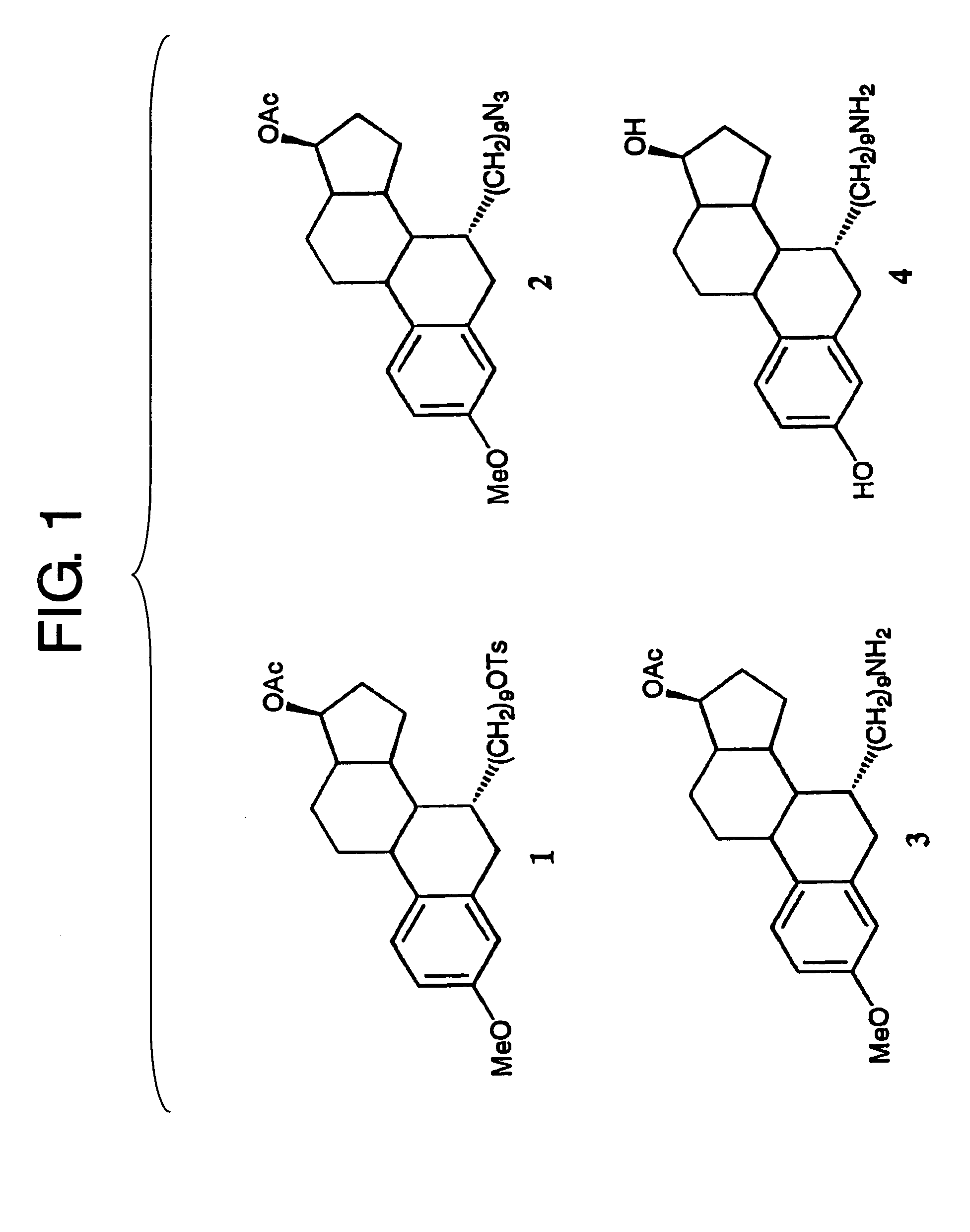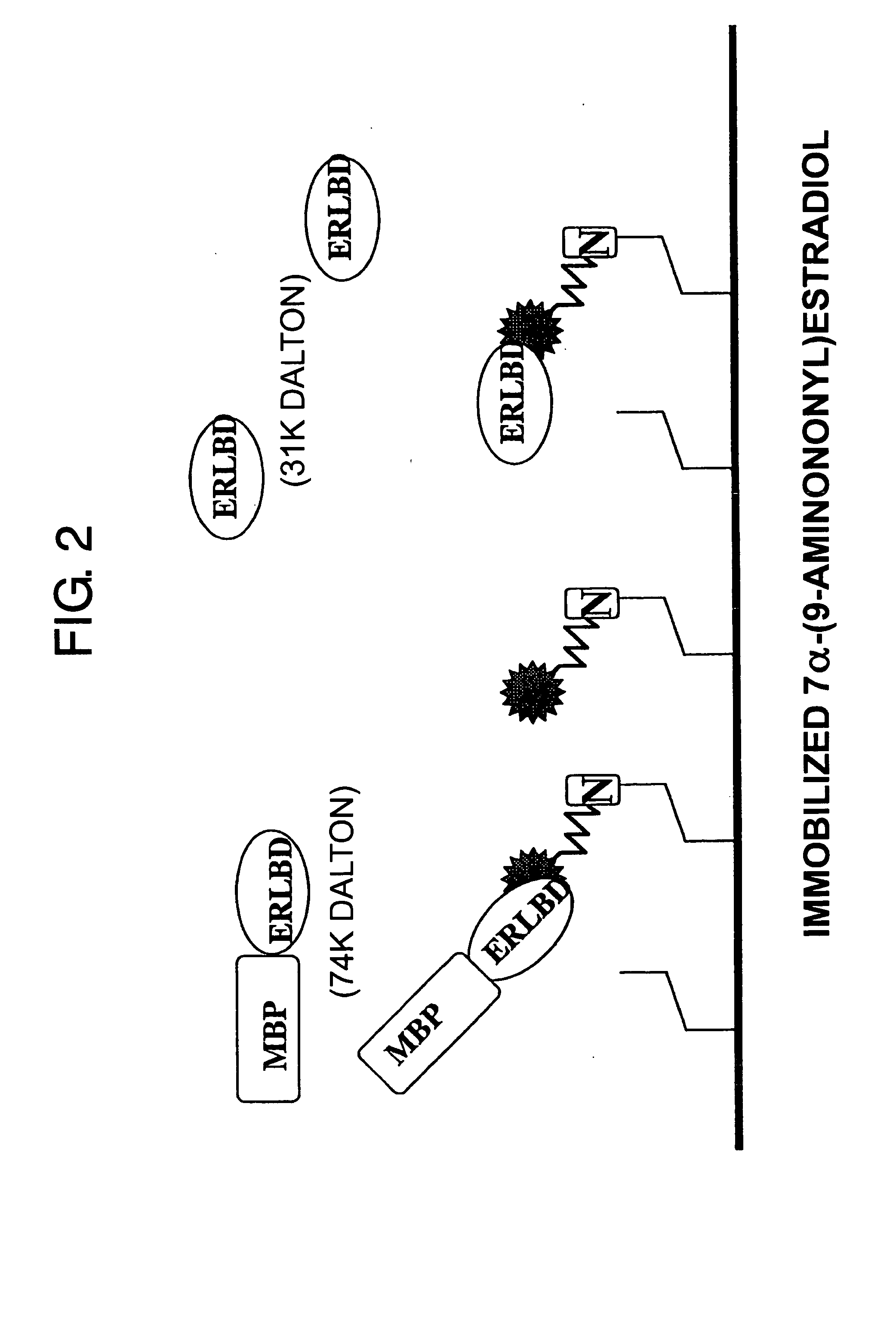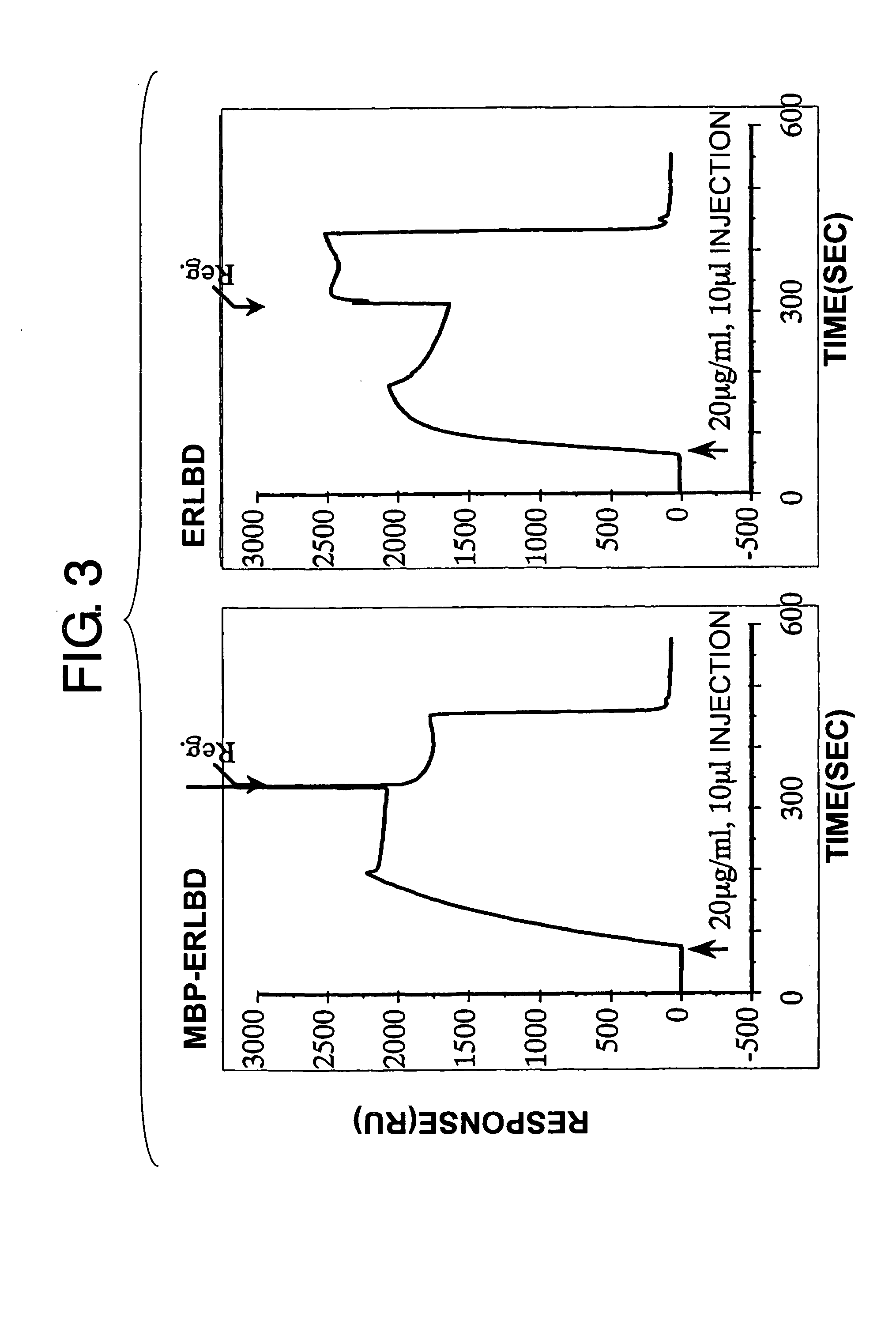Methods for detecting binding of low-molecular-weight compound and its binding partner molecule
a low-molecular-weight compound and binding partner technology, applied in the field of methods for detecting their binding partners, can solve the problems of difficult to obtain reproducible and reliable, difficult to detect the change in spr itself, and difficult to detect the binding of low-molecular-weight compounds used as test substances to immobilized proteins. , to achieve the effect of minimizing the inactivation of the binding activity, reducing the inactiv
- Summary
- Abstract
- Description
- Claims
- Application Information
AI Technical Summary
Benefits of technology
Problems solved by technology
Method used
Image
Examples
example 1
1. Apparatus and Reagents
[0101] BIACORE up grade, BIACORE 3000, Sensor Chip CM5, HBS (containing 10 mM Hepes, 0.15 M NaCl, 3.4 mM EDTA, and 0.05% Tween 20, pH 7.4), and amine coupling kit were purchased from Biacore AB.
2. Synthesis of Low-Molecular-Weight Compound to be Immobilized
[0102] Compound 4 [7α-(9-aminononyl)estradiol] to be immobilized on the Sensor Chip CM5 was synthesized as follows. Compound 1 (34 mg) was synthesized according to the method described in a patent (U.S. Pat. No. 4,659,516). A NaN3 (3.9 mg) was added to a solution of compound 1 in DMF (1 ml), and the mixture was stirred at 50° C. for 1.5 hr. After the solvent was evaporated, the residue was dissolved in CH2Cl2, washed with water, and dried over MgSO4, and then the solvent was evaporated. The resulting solid was purified by preparative TLC to obtain compound 2 (22 mg, yield 82%). Compound 2 (20 mg) was dissolved in MeOH (2 ml), and stirred under a hydrogen atmosphere in the presence of 10% Pd—C catalyst...
example 2
1. Apparatus and Reagents
[0114] BIACORE 3000, Sensor chip CM5, HBS-EP (10 mM Hepes, 0.15 M NaCl, 3.4 mM EDTA, 0.05% Tween 20, pH 7.4), and amine coupling kit were purchased from Biacore AB. Recombinant human Vitamin D3 receptor (VDR) was purchased from Pan Vera Corp.
2. Synthesis of an aminoalkyl vitamin D3 derivative, ED-533
[0115] ED-533 ((1α,3β,5Z,7E)-25-(10-aminodecanyl)-27-nor-9,10-secocholesta-5,7,10(19)-triene-1,3,25-triol) was prepared as follows. The synthetic scheme is shown in FIG. 8.
(1) Preparation of (1α,3β,20S)-1,3-bis((1,1-dimethylethyl)dimethylsilyl)oxy)-20-iodomethyl-pregna-5-ene
[0116] To a mixture of (1α,3β,20S)-1,3-bis((1,1-dimethylethyl)dimethylsilyl)oxy)-pregna-5-ene-20-methanol (Chem. Pharm. Bull. 39(12), 3221 (1991), 34.14 g), triphenylphosphine (18.62 g), imidazole (5.24 g), and dichloromethane (350 ml), iodine (16.52 g) was added while being cooled on ice, and the mixture was stirred at room temperature for 30 minutes. The reaction mixture was evaporat...
PUM
| Property | Measurement | Unit |
|---|---|---|
| pH | aaaaa | aaaaa |
| concentration | aaaaa | aaaaa |
| pH | aaaaa | aaaaa |
Abstract
Description
Claims
Application Information
 Login to View More
Login to View More - R&D
- Intellectual Property
- Life Sciences
- Materials
- Tech Scout
- Unparalleled Data Quality
- Higher Quality Content
- 60% Fewer Hallucinations
Browse by: Latest US Patents, China's latest patents, Technical Efficacy Thesaurus, Application Domain, Technology Topic, Popular Technical Reports.
© 2025 PatSnap. All rights reserved.Legal|Privacy policy|Modern Slavery Act Transparency Statement|Sitemap|About US| Contact US: help@patsnap.com



